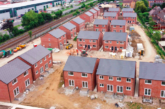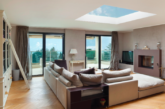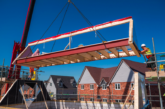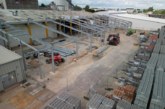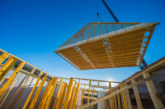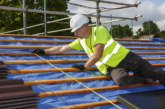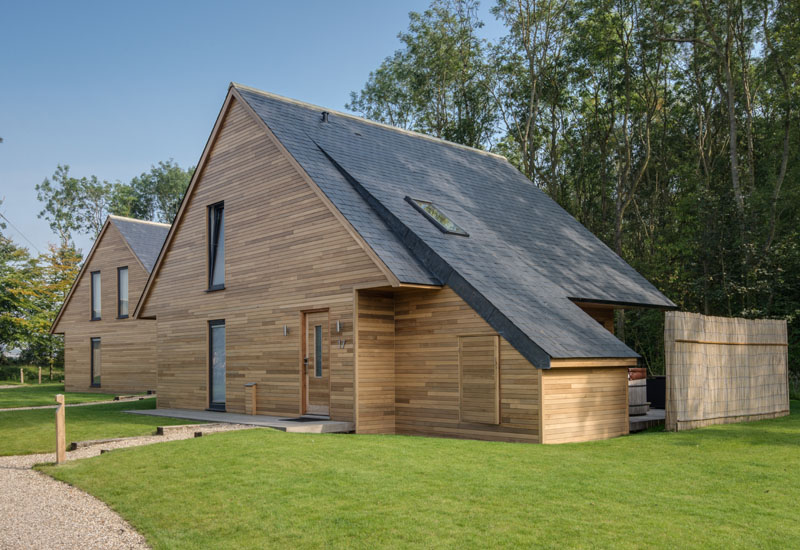
Slate has been used on roofs for years and as a natural material it has good sustainability credentials. PHPD visited Spanish slate manufacturer Cupa Pizarras to find out more about its slate solutions.
Set against a backdrop of rolling mountains and valleys in northern Spain, the Cupa Pizarras quarry and mines are amongst some of the largest in the world. In fact, one quarry is the biggest natural slate quarry anywhere. However, the key message the company is keen to reinforce is not the size of the quarry but the sustainability credentials of the age old building material.
The process through which the slate goes from quarry to roof is a carefully controlled one. The slate is first subject to geological surveys in order to ensure the quality of the slate meets the required standards. It is then extracted from mines and 16 quarries in Galicia, Castile and Leon in northern Spain. The extraction of the slate is an important process that includes breaking the slate up with diggers and diamond cutters in the quarry.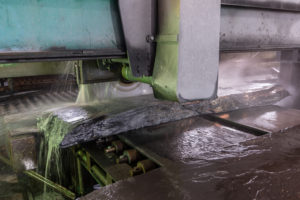
The quarries in Galicia feed 22 factories in the mountains where the manual shaping of the slates take place with only water added during the process. The water is recycled to further reduce the environmental impact.
There are no artificial materials or chemicals added. The slate is kept wet and manually cut into the necessary sizes where it is subject to further quality checks before shaped, if necessary, and packed. Despite 97% of the slate that is extracted not being used – due to not passing the geological surveys – there is minimal environmental impact as local trees are planted over excavation sites as part of the company’s environmental policy. Julian Fernandez, director of marketing, commented: “We are very proud to offer a natural product with lower environmental impact than any other alternative for roofs and cladding. The simplicity of its production process makes it the sustainable solution for any project.”
“We are very proud to offer a natural product with lower environmental impact than any other alternative for roofs and cladding”
The environmental policy is also applied to the transportation of the product, with 60% of the slate delivered via shipping, as opposed to air freight. According to the company, life cycle analysis, which analyses a product’s overall environmental impact, confirms natural slate as the best sustainable choice for any architectural project. This is based on information from the British database Green Book which compares water and energy consumption as well as atmospheric pollution.
Durability & traceability
 The company offers varying levels of durability with its slates ranging from 5mm to 9mm thickness. The type of slate needed depends on the weather conditions, with thicker slates proving more durable under a climate with heavy snow, for example. The natural slate is also fire and completely water proof with no special treatment needed. There are guarantees offered on a number of products, with the Excellence range coming with 100 years guarantee. A report on the Heavy duty 3 showed that under weather tests the slate could perform for longer than a century under Scottish weather conditions. Julian added: “We offer a 100 year guarantee on our Excellence range, since we are completely confident our slates will last a lifetime.”
The company offers varying levels of durability with its slates ranging from 5mm to 9mm thickness. The type of slate needed depends on the weather conditions, with thicker slates proving more durable under a climate with heavy snow, for example. The natural slate is also fire and completely water proof with no special treatment needed. There are guarantees offered on a number of products, with the Excellence range coming with 100 years guarantee. A report on the Heavy duty 3 showed that under weather tests the slate could perform for longer than a century under Scottish weather conditions. Julian added: “We offer a 100 year guarantee on our Excellence range, since we are completely confident our slates will last a lifetime.”
The company offers traceability assurances which can identify the origin, type, technical data and production dates for each of our natural slates with a unique barcode. Cupa Pizarras says the traceability means that architects can specify the exact slate used on a building for renovation projects as well as trace any quality issues. The company produces and transforms its natural slate in its own quarries and warehouses to ensure quality.
Cladding options
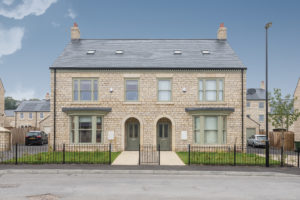 The company has also branched out into the cladding market with its Cupaclad offering which it describes as a rainscreen cladding option with natural slate. Julian commented on the current state of the façade market: “Cupaclad opens a world of options for designing natural slate facades. In Denmark we currently sell 50% of our production for façade projects, when 7 years ago it was 100% roofs.”
The company has also branched out into the cladding market with its Cupaclad offering which it describes as a rainscreen cladding option with natural slate. Julian commented on the current state of the façade market: “Cupaclad opens a world of options for designing natural slate facades. In Denmark we currently sell 50% of our production for façade projects, when 7 years ago it was 100% roofs.”
The cladding slates include invisible and visible fixing systems.
Adding further to the range, Thermoslate is what the company describes as the world’s first natural slate solar panel. It can be integrated into a façade or roof to provide renewable energy for heating and domestic hot water. Cupa Pizarras say that Thermoslate can supply 2/3 of annual hot water requirements and is waterproof as well as safe with a maximum temperature of 95 degrees due to the properties of natural slate.
However it is clear that the roofing market is still very much the core focus of the business, with Julian noting: “Our product is roofing slates, we have been producing them since 1892, and we take pride in being the only real specialists left.”
Market reach
Cupa Pizarras are currently selling to a number of different countries around the world, from Madagascar to New Zealand and are looking for new markets for its product. The natural slate company sends 20% of its products to the UK, with France its number one customer with 50% demand with Germany and Belgium having an 18% and 15% demand respectively.
The product is mostly used for residential properties to finish a pitched roof, although it is sometimes used on renovations due to its longevity. Cupa Pizarra’s natural slate has also been used on a number of notable projects in other parts of the world including Central railway station in Japan, Notre Dame Seminary in USA and the metropolis building in Spain.

